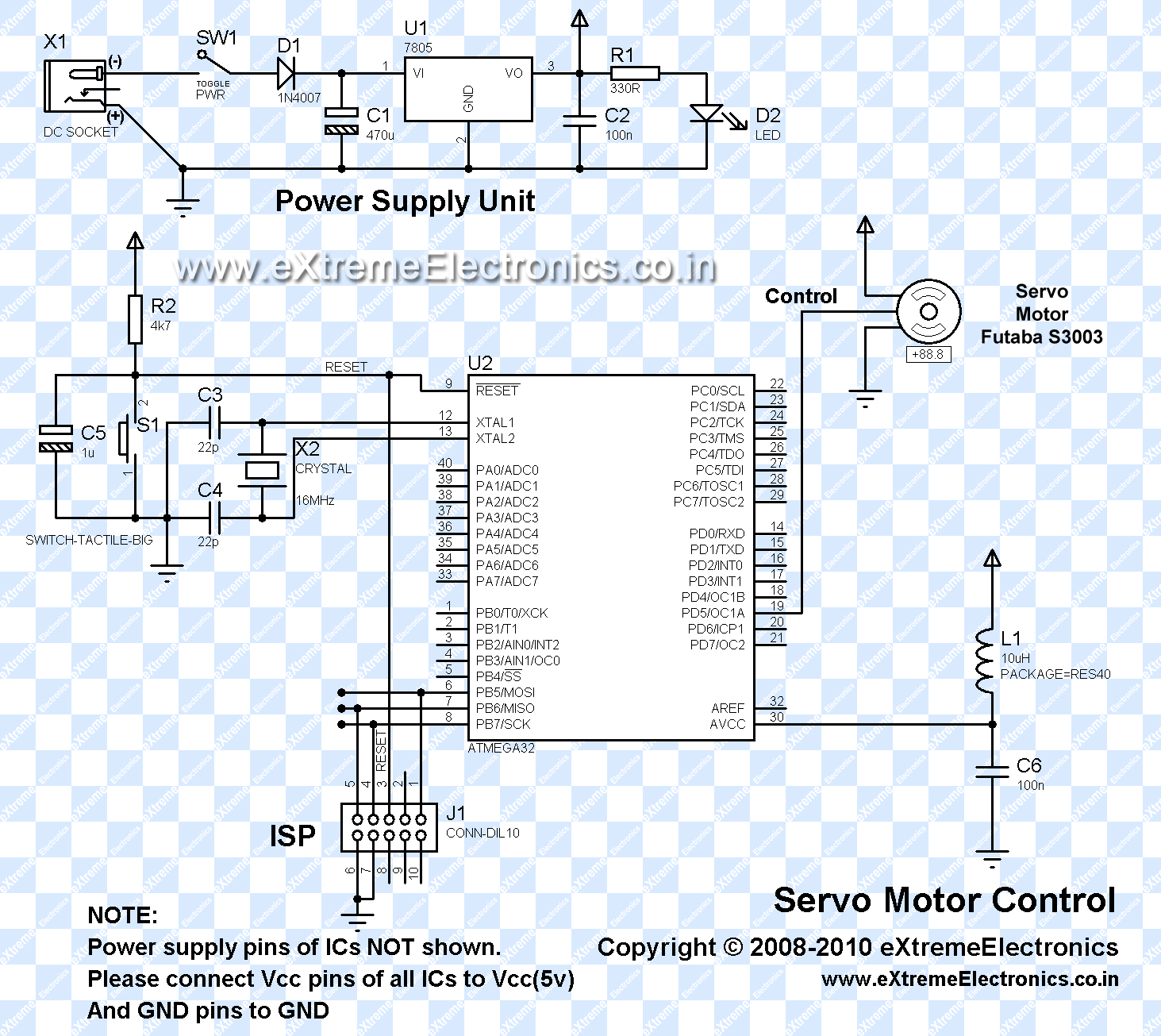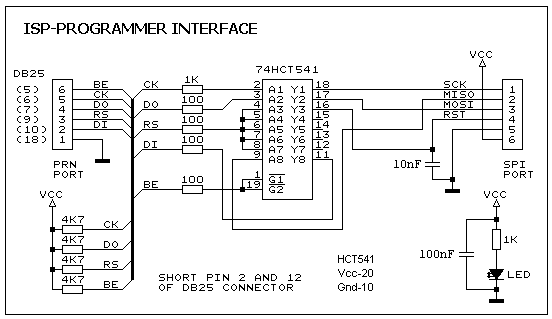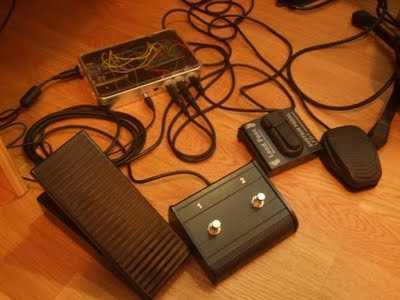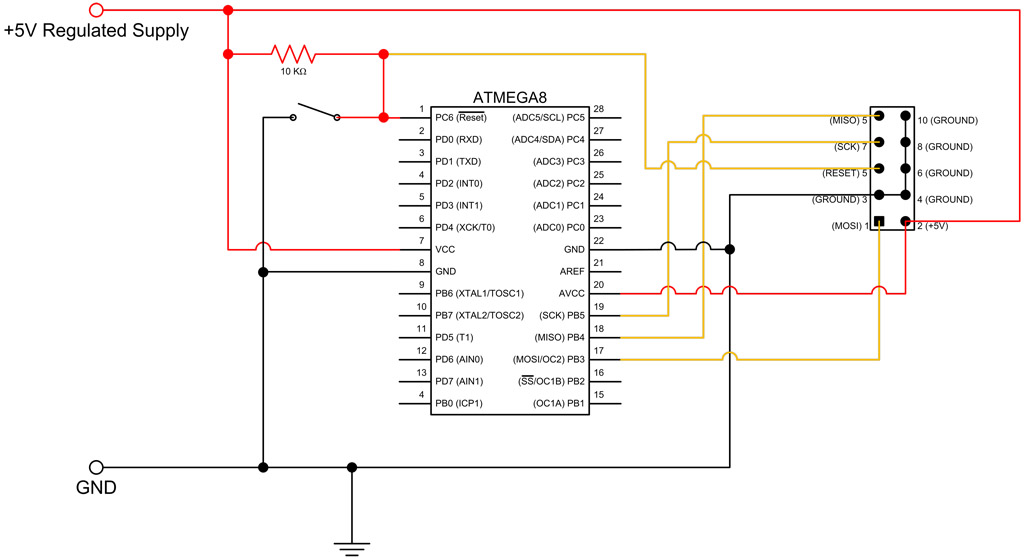
Arduino Mega 512 kB SRAM expansion shield
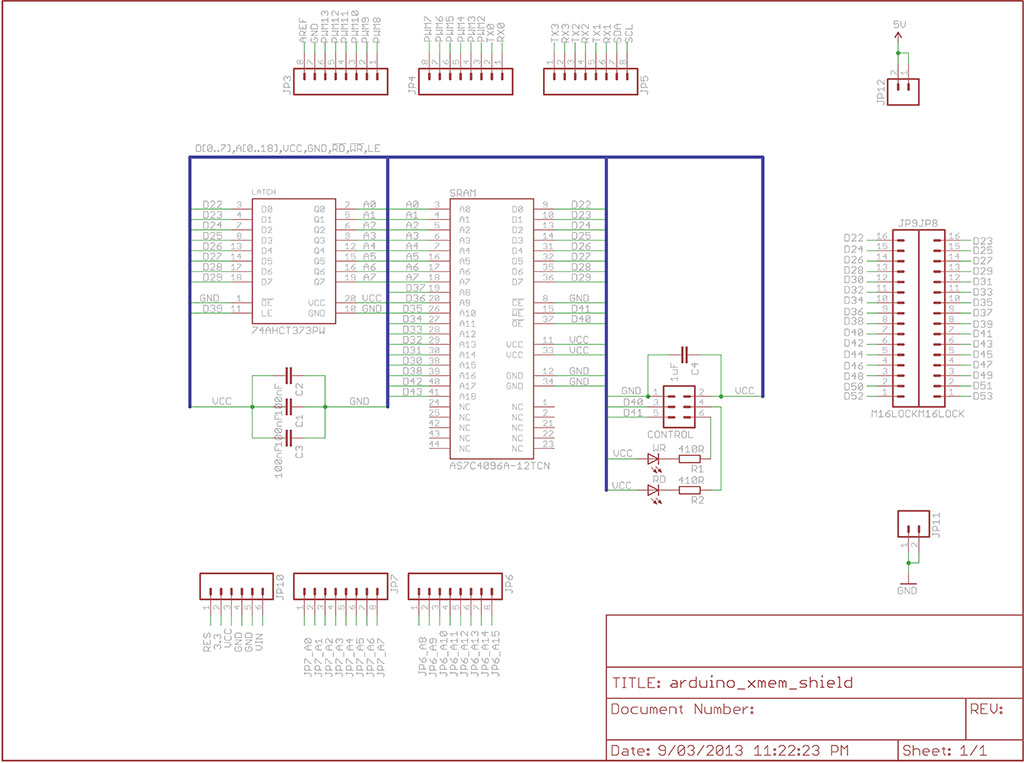
Programming the GPS Disciplined Oscillator (GPSDO) with the QP state machine framework has revealed that the Arduino Mega 2560 system has run out of SRAM. This is not surprising given the limited 8 kB available, especially when programming in C++ with an STL library port. A potential solution comes from Andy Brown, who offers a 512 kB SRAM expansion for the Arduino Mega. However, the design requires modifications to fit a full-sized Arduino Mega shield instead of a board that sticks off the side. A new layout has been created for the SRAM memory expansion to serve as an Arduino Mega-sized expansion board. The modified circuit retains the original design but features appropriate pin connections for a complete Mega shield. Current designs for the shield PCB are also available. Although the layout may not be aesthetically pleasing, it meets the necessary requirements, and prototypes are being prepared. There is an opportunity for beta testers to receive a prototype board at a cost of approximately US$10, excluding postage and handling.
The proposed design involves a SRAM expansion board tailored for the Arduino Mega 2560, aimed at enhancing the memory capacity for applications such as GPSDO programming. The original design by Andy Brown has been adapted to create a full-sized shield that integrates seamlessly with the Mega's architecture. The expansion board is equipped with a 512 kB SRAM chip, which significantly increases the available memory for complex applications, allowing for more extensive libraries and functionalities.
The schematic of the board includes essential components such as the SRAM chip, voltage regulators to ensure stable power supply, and appropriate decoupling capacitors to minimize noise. The pin layout is designed to match the Arduino Mega's GPIO configuration, ensuring that all necessary connections, including power, ground, and data lines, are accessible without interference. The PCB design incorporates standard practices for routing, including ground planes for signal integrity and careful consideration of trace widths to handle the expected current loads.
Prototyping efforts will focus on verifying the functionality of the memory expansion, ensuring compatibility with existing Arduino libraries, and assessing the performance of the additional SRAM in real-world applications. Beta testers will be provided with prototype boards to evaluate the design's effectiveness in various use cases, with feedback utilized to refine future iterations of the product. The anticipated cost structure aims to cover manufacturing expenses while allowing for further development of the expansion board.Programming the GPS Disciplined Oscillator (GPSDO) with the QP state machine framework -, which I badly need to write up - has led to the conclusion that I`ve run out of SRAM on the the Arduino Mega 2560 system. Not surprising given that there`s only(!) 8 kB available and I`m programming in C+ with an STL library port, etc.
So what to do Well i t would seem that Andy Brown - andybrown. me. uk - again provides the solution with his 512 kB SRAM expansion for the Arduino Mega. Either he`s omniscient or, more likely, he`s "been there and done that!" However I want to be able to mount everything and a board sticking off the side - as detailed in Andy`s design - doesn`t meet the need. So I`ve re-laid out the SRAM memory expansion to be an Arduino Mega sized expansion board. Figure 1 shows the modified circuit, exactly the same as the original design but with suitable pin connections for a full Mega shield.
Figures 2a and 2b meanwhile are the current design for the shield PCB. I doubt the layout will win any competitions for a PCB layout, but everything is there and now I`m working to get some prototypes made up. I`m looking for a couple of beta (alpha ) testers. If you`re interested in receiving a prototype board - noting that it is a prototype and not at all tested - then let me know!
Cost to you will be whatever it costs me on a per board basis, plus postage and handling. Currently it looks likes each board will cost US$10 excluding postage. 🔗 External reference
The proposed design involves a SRAM expansion board tailored for the Arduino Mega 2560, aimed at enhancing the memory capacity for applications such as GPSDO programming. The original design by Andy Brown has been adapted to create a full-sized shield that integrates seamlessly with the Mega's architecture. The expansion board is equipped with a 512 kB SRAM chip, which significantly increases the available memory for complex applications, allowing for more extensive libraries and functionalities.
The schematic of the board includes essential components such as the SRAM chip, voltage regulators to ensure stable power supply, and appropriate decoupling capacitors to minimize noise. The pin layout is designed to match the Arduino Mega's GPIO configuration, ensuring that all necessary connections, including power, ground, and data lines, are accessible without interference. The PCB design incorporates standard practices for routing, including ground planes for signal integrity and careful consideration of trace widths to handle the expected current loads.
Prototyping efforts will focus on verifying the functionality of the memory expansion, ensuring compatibility with existing Arduino libraries, and assessing the performance of the additional SRAM in real-world applications. Beta testers will be provided with prototype boards to evaluate the design's effectiveness in various use cases, with feedback utilized to refine future iterations of the product. The anticipated cost structure aims to cover manufacturing expenses while allowing for further development of the expansion board.Programming the GPS Disciplined Oscillator (GPSDO) with the QP state machine framework -, which I badly need to write up - has led to the conclusion that I`ve run out of SRAM on the the Arduino Mega 2560 system. Not surprising given that there`s only(!) 8 kB available and I`m programming in C+ with an STL library port, etc.
So what to do Well i t would seem that Andy Brown - andybrown. me. uk - again provides the solution with his 512 kB SRAM expansion for the Arduino Mega. Either he`s omniscient or, more likely, he`s "been there and done that!" However I want to be able to mount everything and a board sticking off the side - as detailed in Andy`s design - doesn`t meet the need. So I`ve re-laid out the SRAM memory expansion to be an Arduino Mega sized expansion board. Figure 1 shows the modified circuit, exactly the same as the original design but with suitable pin connections for a full Mega shield.
Figures 2a and 2b meanwhile are the current design for the shield PCB. I doubt the layout will win any competitions for a PCB layout, but everything is there and now I`m working to get some prototypes made up. I`m looking for a couple of beta (alpha ) testers. If you`re interested in receiving a prototype board - noting that it is a prototype and not at all tested - then let me know!
Cost to you will be whatever it costs me on a per board basis, plus postage and handling. Currently it looks likes each board will cost US$10 excluding postage. 🔗 External reference
